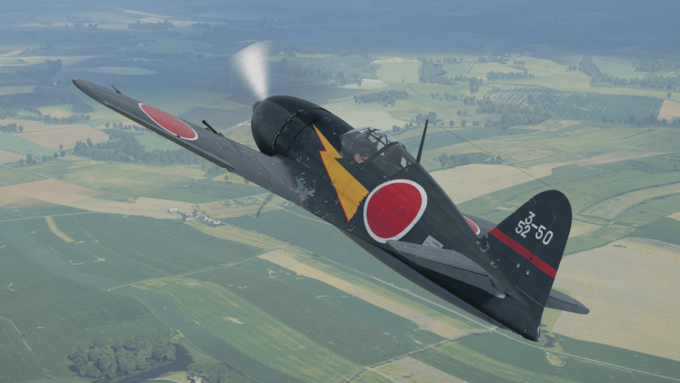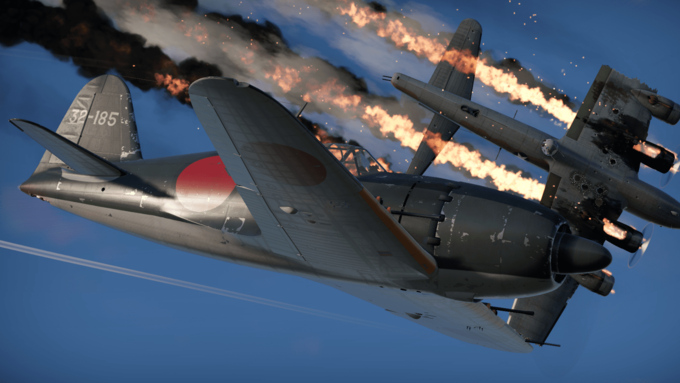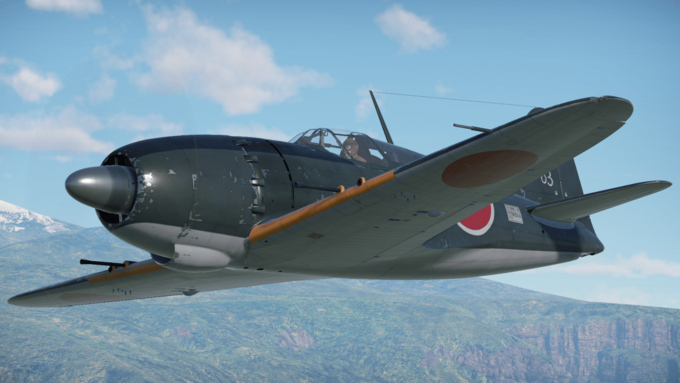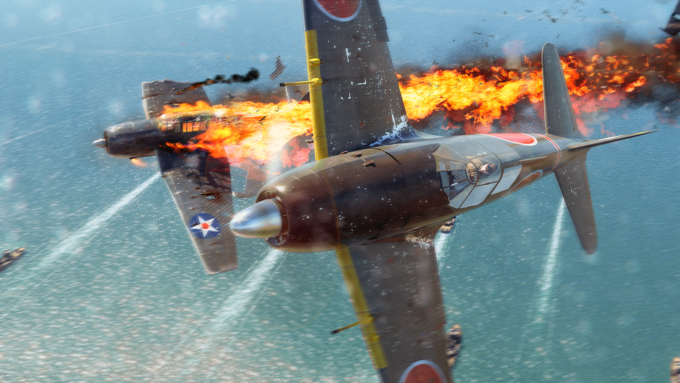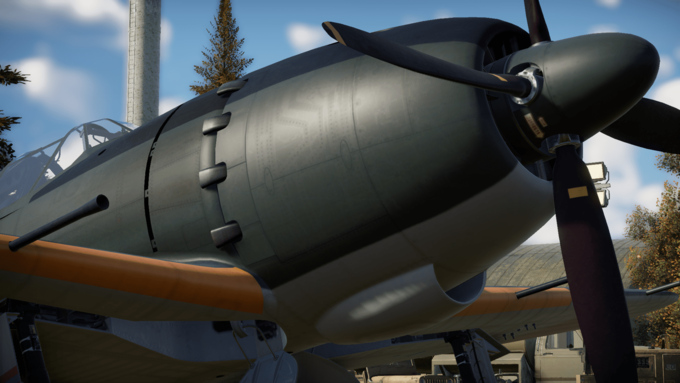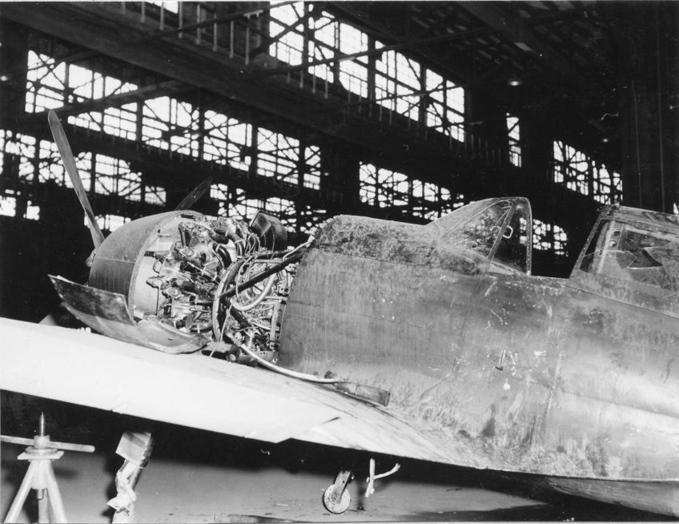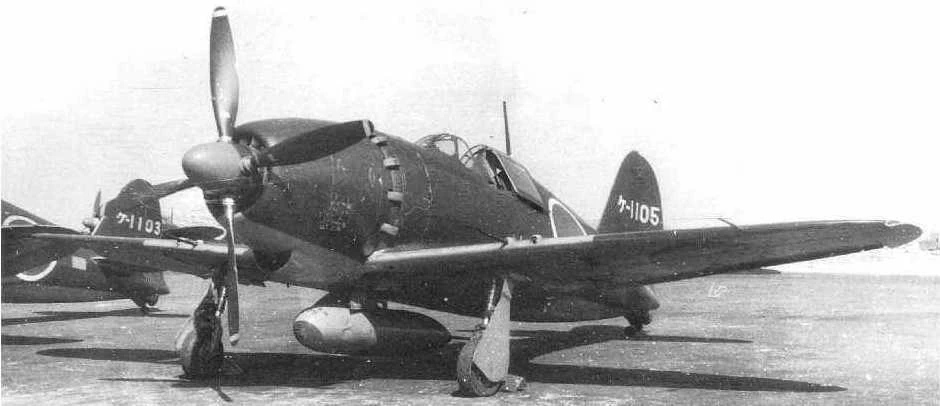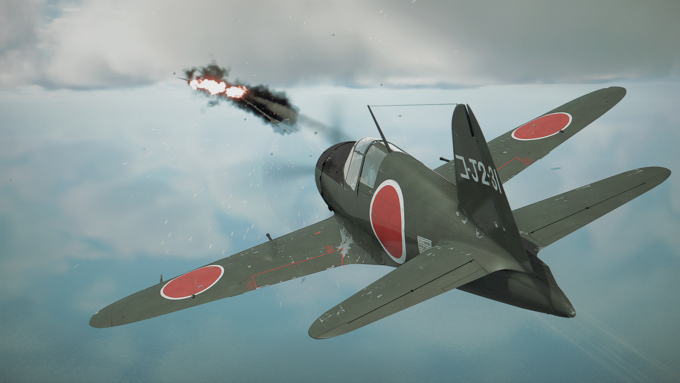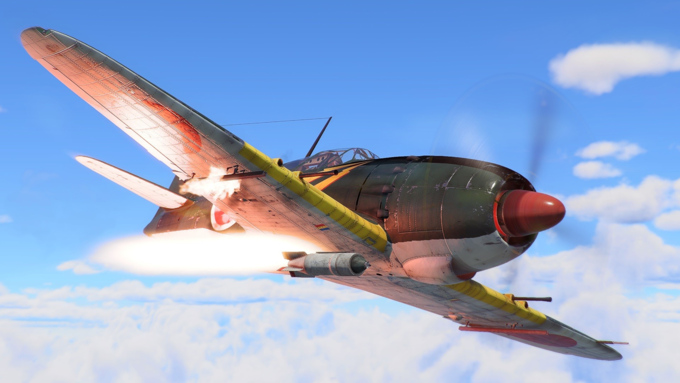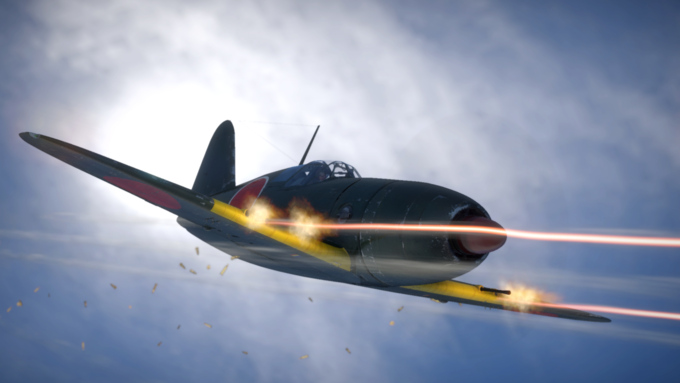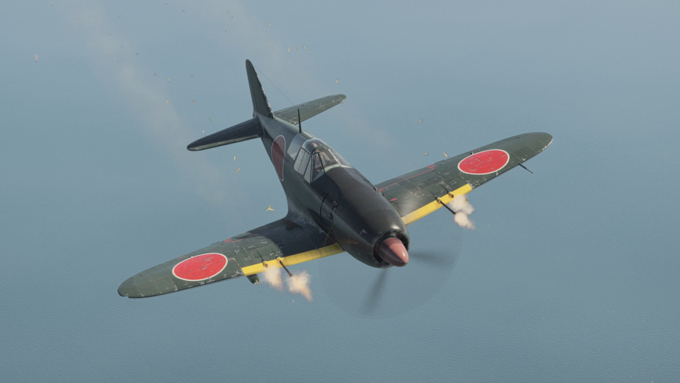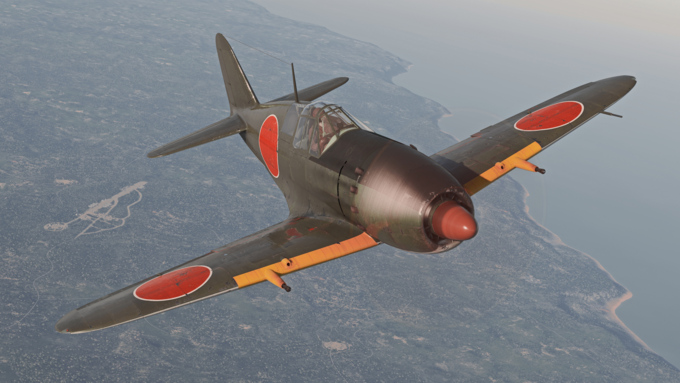The Mitsubishi J2M, designated Raiden (雷電), was a single-engine fighter aircraft developed for the Imperial Japanese Navy during World War II. It was designed to intercept high-altitude bombers and had a powerful engine, heavy armament and good speed. The J2M had several variants and was used in combat against American bombers and fighter interception over Japan and performed well, but it suffered from reliability issues and production delays. The J2M was one of the more advanced Japanese fighters of the war, but it could not alter the course of the conflict.
Nicknames:
Designation: Raiden (雷電, Lightning Bolt)
Allied Codename: Jack
Development
During the China Incident (Sino-Japanese war) the Navy sustained some damage from Chinese bomber groups as they didn't have any dedicated interceptors at the time, for this reason, the Navy put out multiple specifications for planes to deal with threats that the Chinese made clear to the Navy. For bombers specifically they specified a strictly local-defence interceptor known as the 14-Shi Interceptor; which stated the following:
Speed ≥ 340 kn (at 6,000 m)
Climb rate ≥ 6,000 m within 5 minutes 30 seconds
Ceiling ≥ 11,000 m
Cuising range ≥ 0.7 hours at the highest speed (at 6,000 m).
Armament = 2 x 20 mm and 2 x 7.7 mm
Other = Bulletproof plate behind the pilot seat.
Mitsubishi was the only one to respond to this specification and put Jiro Horikoshi and his team in charge just after they finished work on the 12-Shi Carrier Fighter (A6M).
But as far as development went, teething development problems stemming from the Kasei 23 engine cooling system and the landing gear led to a slowdown in development and especially production. From excessive vibrations from the engine, poor landing gear design got Lt. Hoashi Takumi killed in a test flight.
Even with the many issues in development, Mitsubishi pushed the J2M into mass production without even having it formally adopted by the Navy in September of 1943, problems were still present, and its specifications weren't as projected in reality, output was lower than expected, and electrical faults still haunt the landing gear. These low output problems at high altitudes were being resolved with a new specification dubbed under the 14-Shi Kai Interceptor* which resulted in the J2M4 with as engine the Kasei 23c having the requested performance and allowed for the J2M's further development. Its last variants within the J2M family were bolstering the Kasei 26a engine and resulted in the J2M5 and J2M7's (which were J2M3 fuselages with the new engine). All these new variants and new engines boosted their performance, but electrical malfunctions were never truly solved.
The Raiden was officially adopted by the Navy in October of 1944, 5 years after the issued request.
The J2M4 in-game (J2M4 Kai) isn't a separate variant of the J2M4 as the Kai stems from 14-Shi Kai
Combat History
The first few produced J2M2s were delivered to the development units in December 1942, but the troublesome amount of engine problems still held it back from mass production. Troubleshooting almost took a year, and the first batch of the serial built J2M2 Model 11 could be delivered to 381st Kōkūtai in December of 1943. Parallel with the J2M2, production of the J2M3 Model 21 started, which would appear in October of 1943, but deliveries to combat units only started at the beginning of February of 1944.
The Raiden made its combat debut in June 1944 during the Battle of the Philippine Sea. Several J2Ms operated from Guam and Saipan and a small number of aircraft were deployed to the Philippines. Later, some J2Ms were based in Chosen airfields, Yokosuka, Yatabe, Genzan, Tainan, Konoike and Chushi for defence and fighting against potential Soviet threats and units.
Primarily designed to intercept bombers like the Boeing B-29 Superfortress which became very common near the end of the war. The early J2Ms were handicapped at high altitude by the lack of a turbocharger, even though its four-cannon armament supplied effective firepower, and the use of dive and zoom tactics allowed it to score occasionally.
J2Ms took part in one of the final aerial combats of the Second World War when four Raidens, accompanied by eight Mitsubishi A6M Zero, all belonging to the 302nd Kokutai, intercepted a formation of USN F6F Hellcats from the aircraft carrier USS Yorktown (CV-10) during the morning of 15 August 1945 over the Kanto Plain. In the engagement that took place only two hours before Japan officially announced its surrender, four Hellcats were lost along with two Raidens and two Zeros.
Vehicles in-game
The first of the J2M Raiden series, equipped with a large engine to meet its requirements, it suffered from many other mechanical issues.
The second and most produced variant of the J2M series, with the nose-mounted MGs swapped out for 20 mm Model 2 cannons in the wings while also switching out the drum mags for the cannons to belts allowing for more ammo.
The 14-Shi Kai prototype, otherwise designated as J2M4, was the first attempt at a higher altitude J2M Raiden with an enormous MK4R-C engine and turbocharger which lengthened the nose of the aircraft considerably. But with problems stemming from the turbocharger and weight balance, cancelled further development with the Kasei 23C engine.
The J2M5 was the higher-altitude variant of the J2M3 equipped with a mechanically driven supercharger increasing its high-altitude performance at the cost of range.
This prototype was an attempt at increasing the lethality of the rather limited production J2M5 subvariant, but due to factory line bombing never entered full production.
